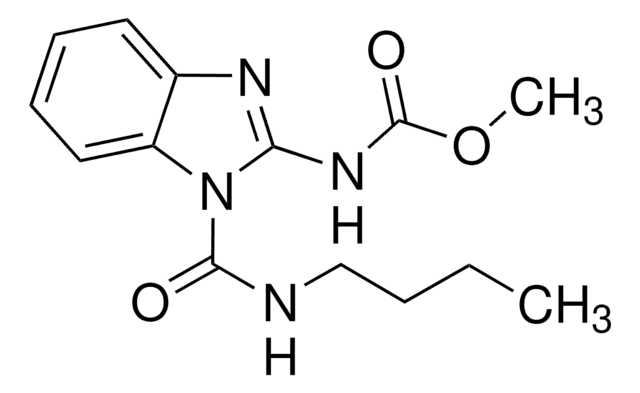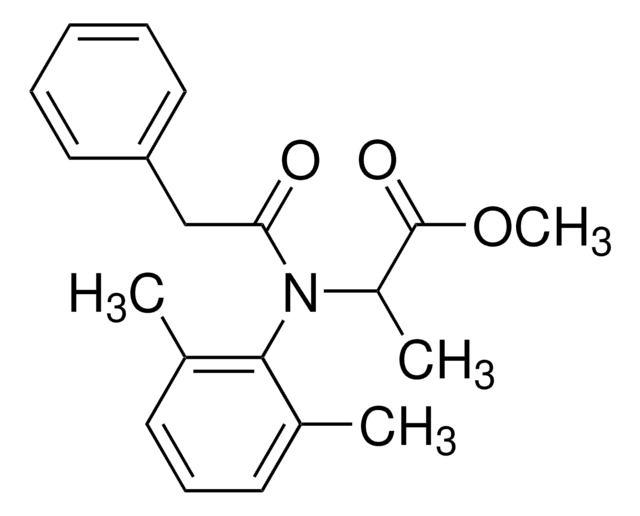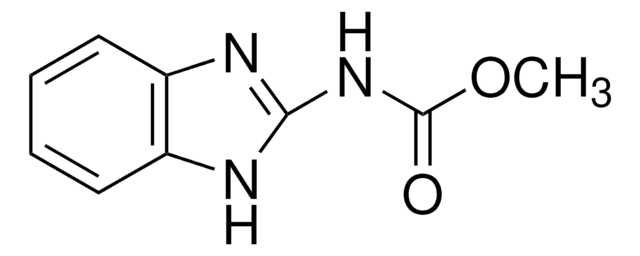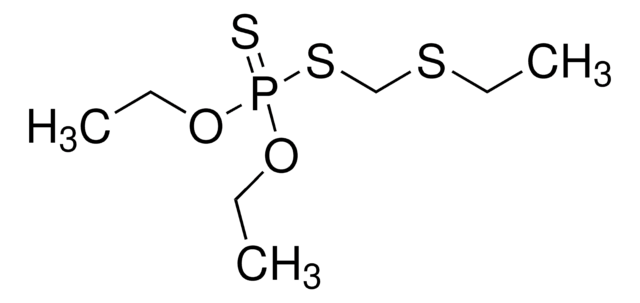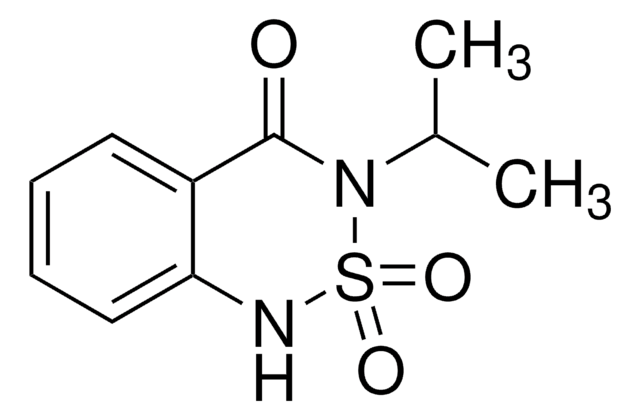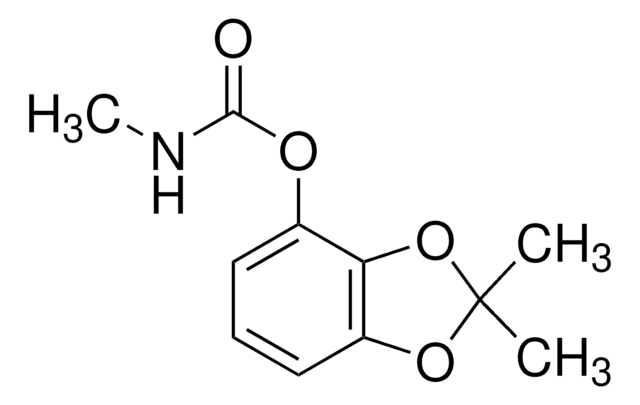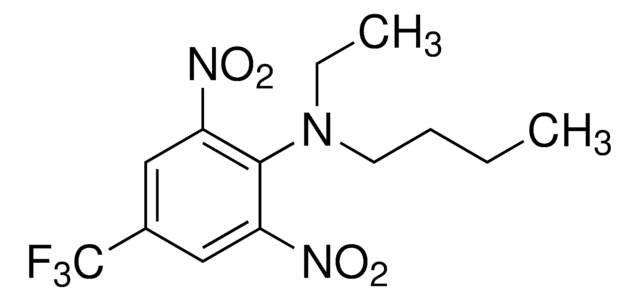31544
Benfuracarb
PESTANAL®, analytical standard
About This Item
Produtos recomendados
grau
analytical standard
Nível de qualidade
linha de produto
PESTANAL®
prazo de validade
limited shelf life, expiry date on the label
técnica(s)
HPLC: suitable
gas chromatography (GC): suitable
Formato
neat
cadeia de caracteres SMILES
CCOC(=O)CCN(SN(C)C(=O)Oc1cccc2CC(C)(C)Oc12)C(C)C
InChI
1S/C20H30N2O5S/c1-7-25-17(23)11-12-22(14(2)3)28-21(6)19(24)26-16-10-8-9-15-13-20(4,5)27-18(15)16/h8-10,14H,7,11-13H2,1-6H3
chave InChI
FYZBOYWSHKHDMT-UHFFFAOYSA-N
Procurando produtos similares? Visita Guia de comparação de produtos
Categorias relacionadas
Descrição geral
Aplicação
- In bananas by application of a modified QuEChERS procedure followed by ultra high performance liquid chromatography coupled to tandem mass spectrometry (UHPLC-MS/MS).
- In honeybees, honey and bee pollen by liquid chromatography coupled to tandem mass spectrometry.
Informações legais
Palavra indicadora
Danger
Frases de perigo
Declarações de precaução
Classificações de perigo
Acute Tox. 3 Inhalation - Acute Tox. 3 Oral - Aquatic Acute 1 - Aquatic Chronic 1 - Repr. 2
Código de classe de armazenamento
6.1C - Combustible acute toxic Cat.3 / toxic compounds or compounds which causing chronic effects
Classe de risco de água (WGK)
WGK 3
Ponto de fulgor (°F)
>212.0 °F
Ponto de fulgor (°C)
> 100 °C
Equipamento de proteção individual
Eyeshields, Faceshields, Gloves, type ABEK (EN14387) respirator filter
Escolha uma das versões mais recentes:
Certificados de análise (COA)
Não está vendo a versão correta?
Se precisar de uma versão específica, você pode procurar um certificado específico pelo número do lote ou da remessa.
Já possui este produto?
Encontre a documentação dos produtos que você adquiriu recentemente na biblioteca de documentos.
Nossa equipe de cientistas tem experiência em todas as áreas de pesquisa, incluindo Life Sciences, ciência de materiais, síntese química, cromatografia, química analítica e muitas outras.
Entre em contato com a assistência técnica